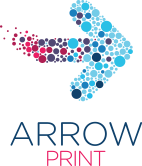Environmental Policy
Arrow Print is a progressive organisation, committed to continual improvement of our methods and procedures through an appropriate management system that identifies, prioritises and addresses environmental risks to minimise our impact on the environment.
Arrow makes the environment an important component of our business decisions, ensuring it’s considered in planning for changes to existing materials, processes, equipment and facilities.
We conduct our business in compliance with applicable environmental regulations and legislation. As well, where appropriate we undertake voluntary initiatives that exceed applicable laws and regulations.
At Arrow we review our strategies, objectives and targets annually and monitor environmental programs to ensure continuous improvement of our environmental performance. Specifically for printing, our main targets for consideration are the consumption of paper, chemicals, energy and water and in the generation of waste.
To date, we have implemented the following procedures within our daily operations:
Paper Consumption
Currently, almost all of the jobs printed at Arrow use paper containing a minimum of 10% pre-consumer or post-consumer recycled content. We always seek to buy paper from suppliers who use pulp from sustainable resources (i.e. from planted, renewable forests) and are committed to increasing our clients’ use of papers that meet these criteria or higher. In addition, we are experienced in the use of 100% certified post-consumer recycled papers and use them at every opportunity.
We have significantly reduced paper waste from ‘make-ready’ operations by reducing errors ‘upstream’ through tighter quality control checks prior to jobs going to press. The same controls have virtually eliminated wastage through errors in our bindery and post-press operations.
Water and Chemical Consumption
Arrow uses Computer-to-Plate (CTP) technology for making our printing plates and we’ve eliminated all chemicals, water and energy wastage previously associated with the interim step of film processing – a major area for consumption of water and chemicals in the printing industry.
Wherever commercially viable, we use substitutes for chlorinated hydrocarbons and ozone-depleting chemicals commonly used in the printing process. We have also significantly reduced the consumption of alcohol as a wetting agent in the printing process and other ‘green’ alternatives are regularly trialled. Our ‘on press’ dampening system recycles the press water and filters it through fine pores, enabling us to use our dampening solution three times longer than normal, saving both water and waste.
Inks
Whenever we can specify their use, we use non-toxic soy inks. When using more traditional inks, we still use products with a large soy content. The expectations of our clients will dictate which process we use, however we are mindful of educating our customers as a primary objective.
Our use of CTP plate technology reduces ink consumption when compared to more traditional print processes by providing faster ‘make-readies’, with less waste sheets and less ink coverage to achieve the same results.
Energy Consumption
The production plant at Arrow has an electronically controlled heating and cooling system. However in the more temperate months, we use natural air flow and lighting to ensure optimal energy efficiency.
Our lighting is ’zoned’ and can be isolated and shutdown when low activity is detected in that area. We have also reduced the use of ‘on-press’ IR drying processes and rely on more efficient production planning to allow ‘off-press’ drying time.
Recycling
We collect and recycle all suitable paper waste in the production cycle, including pre-production ‘off-cuts’ and post-production waste from printing and binding operations. Paper products from the office are similarly collected and integrated into the recycling system. Items such as steel strapping, printing plates and other metals are segregated for off-site recycling. All wood pallets are re-used or returned to the supplier for recycling. Packaging cartons from in-bound goods are often used to package outgoing goods.
Staff Training
We ensure our sales and production staff stay up-to-date on the latest developments in environmental management and are committed to helping our clients make environmentally informed choices when they specify printing requirements.
Digital printing
Arrow has recently installed an HP Indigo digital printing press to complement its existing offset printing press capabilities.
The evolution of digital printing has resulted in many fundamental changes to the printing process. In turn, these have eliminated many stages in conventional printing that were time, energy and resource-consuming and were accompanied by liquid and solid waste and fumes, some of which require specialist treatment for disposal. As an example, the use of chemistry for film and plate processing is eliminated in digital printing, as is start-up substrate waste.
These technical developments have dovetailed with changes in marketing practices that have led to shorter turnaround times and shorter run lengths. Digital printing supports these trends as well as just-in-time delivery and stockless supply chains.
The environmental impact of this convergence has been enormous. Prior to the advent of digital printing, it is estimated that more than 56 percent of all print was thrown away un-used! The clean, efficient technologies used in our HP Indigo digital printing press, together with recovery and recycling programs, are enabling efficiencies as well as energy and material savings.
We encourage our clients to use this method of print whenever practical and are only too happy to discuss and explore ways to get the most out of this new mode of print delivery.
Future Initiatives
We are currently approaching our ‘upstream’ suppliers to ensure that the products they supply to us are manufactured in an ‘environmentally responsible’ and ‘sustainable’ manner. Arrow intends to only purchase from suppliers who meet these criteria. We will continue to look at new ways to reduce the use of chemicals and solvents in the manufacture of our products.
We are also liaising with our customers to establish their position with regard to ‘downstream’ environmental considerations. Specifically, we are concerned about the responsible disposal of printed product supplied by us at the end of its service life cycle – (i.e. when it becomes redundant).
We would be concerned to see these printed products end up as landfill, rather than be part of an environmentally responsible recycling program.
Arrow is working towards ISO 14000 accreditation for our Environmental Management System and hope to achieve this by March 2017.

